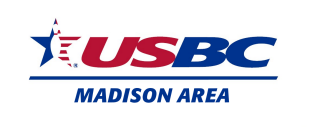Tournament lane assignments was the subject of a recent conversation with Madison Bowling Association tournament chair Mark Habich. Mark was recently questioned about the methodology used to determine lane assignments for association events, specifically randomization of lane assignments.
In light of that conversation, the following describes the methodology used for lane assignments in Madison USBC BA tournaments.
Singles Events
For the association Masters and Senior Masters, lane assignments are essentially, though not perfectly, random. Lane assignments are written on tournament recap sheets. These recap sheets are shuffled, scattered on the check-in table, and drawn by the bowlers at the time of entry. Requests to bowl with specific bowlers are not allowed.
The tournament is prepared for record numbers of entries at any time, but not all prepared recap sheets are initially distributed. Instead, a projected number of entries are laid out. The method mirrors that used in Madison Area Scratch Tour tournament events. The available score sheets for draw typically include Bowler ‘A’ and Bowler ‘B’ on each lane, and sometimes Bowler ‘C’ on each odd lane. Recap sheets with Bowler ‘C’ on the even lanes are added later, if necessary, followed by Bowler ‘D’ on each odd lane, then Bowler ‘D’ on each even lane, and so on.
This distribution method allows tournament management to fill the lanes efficiently and with an equal number of competitors (within one) on each pair. bowlers almost never have to be reassigned once they draw their lanes, unless there is an administrative error (e.g. identical recap sheets) or a need to add additional lanes to the event. In the latter case, the last drawn would be reassigned to the new pair to balance the lanes.
Bowlers could certainly strategize to arrive later in order to decrease their chances of being the lead-off bowler each game if they wished. If tournament management perceived any real strategic advantage to this, we could simply devise a rotation method to eliminate the action.
Association Championships
Association Championship tournament lane assignments are also done fairly randomly though, again, it is not “perfectly” random. Once the number of lanes needed is determined, the tournament director assigns the lanes from the center of the house to the end pairs:
- Order Entry. Earlier entries are assigned first.
- Companion Teams. Teams are paired together when requested.
- Division Pairings. Pairs are then filled with teams in the same division as much as possible
The same methodology is used when assigning lanes for minor events. Specific lane requests are never allowed, including “no end pairs”.
There are circumstances that might alter the procedure. These would include, for example, a bowler who participates on multiple teams. As much care as possible is taken to assign that bowler to a different pair of lanes. In that event, the next closest pair would be used based on the previous criteria.
Another example is there are two division two teams on a shift. One of them is entry one and the other is entry 99. By virtue of pairing division teams, the #99 entry would bowl with entry one. Entry #99 would have no way of knowing this prior to check-in, however.
There are other circumstances, such as small squads, odd number of teams, and the need to leave as many lanes open for the proprietor as possible, but these two are the most common. And, of course, it’s not always perfect. Sometimes it seems we ONLY use end pairs for our tournaments.
Absolute randomness such as on-site lane draw would eliminate the three steps of the procedure, but those steps are there for a reason. Early entry is encouraged. Companion teams is a long held and expected tradition in association championship events at all levels. Some high average teams do not want to cross with a low average team AND vice-versa. Disturbing these three important procedural steps could affect entries and would slow down processes on the day of the squad.
Ultimate Fairness?
Why are lane assignments important? Because bowling isn’t fair. Never has been, never will be. So, it is the responsibility of the tournament to ensure as much consistency and fairness as is humanly possible.
Not every lane is the same and it may not even be the same as itself the next week or the next day or the next shift. And, though not universal, it is true that some pairs of lanes are more conducive to scoring. Of course there are other lanes out there that are just…
Therefore tournament management must make some effort to randomize lane assignments while staying within the bounds of what makes and keeps entries. With the entry growth of the Madison Bowling Association Championships and Senior Championships – in the usual face of national local participation decline – it seems that what we are doing works pretty well.
Of course the ultimate fairness would be to conduct the tournament, slope rate every pair based on the scores on that pair, adjust everyone’s scores on a curve, and award everyone a plaque for a first place tie. But then the expense portion of the entry fee would be just a bit out of hand.
